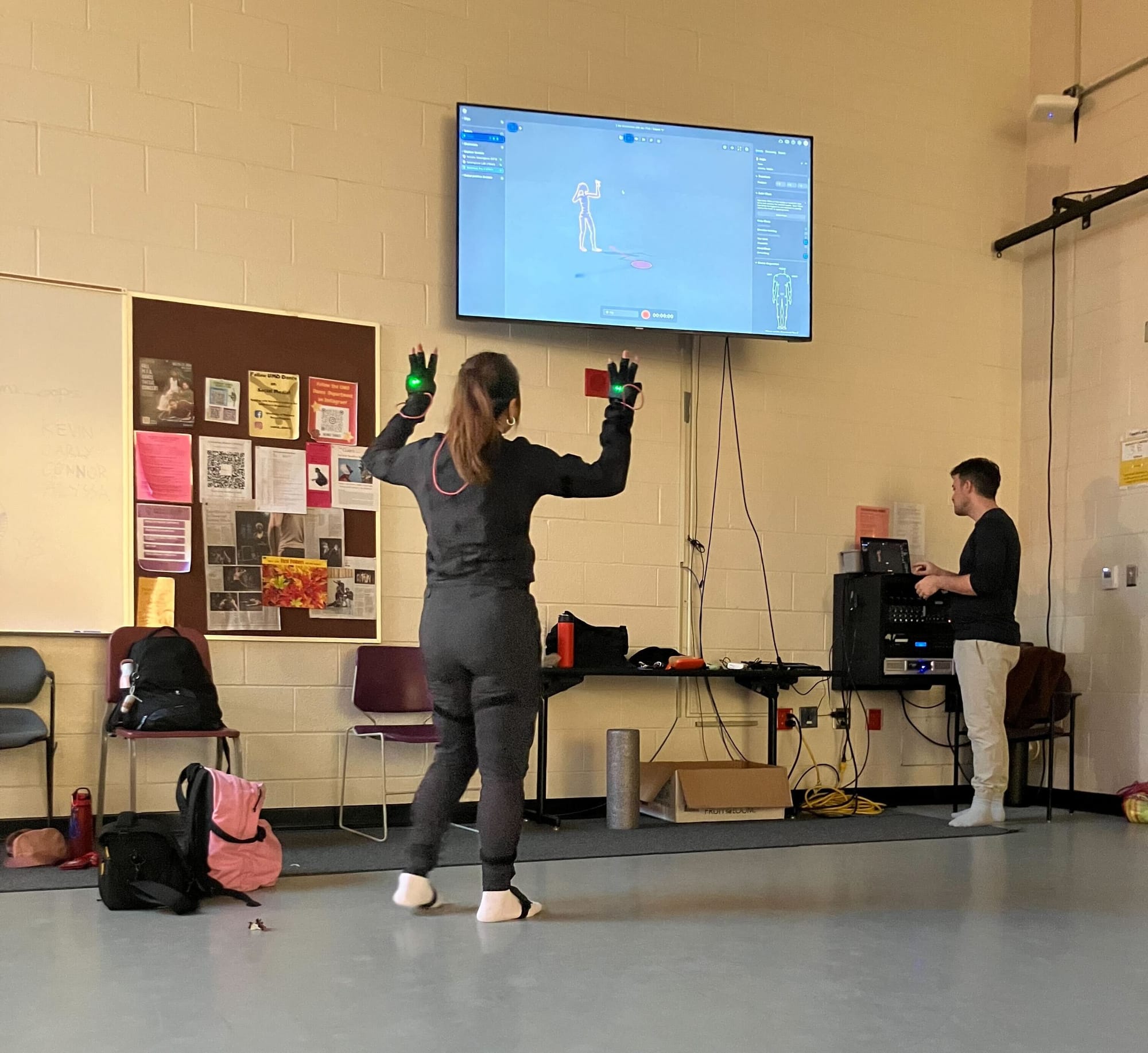Digitizing the human experience

By: Sophia da Silva
In the age of artificial intelligence, what makes us human?
Over the past few months, Master of Fine Arts student Kevin Clark has been investigating this question in his research digitizing the somatic experience: a field of movement study that thinks about the body as a whole.
“What goes on when you try to compress the totality of a human experience into a digital amalgam of something?” asked Clark.
Clark debuted his research on Nov. 1 at this month’s “First Fridays” event, hosted by the University of Maryland School of Theatre, Dance and Performance Studies. “First Fridays” are an informal showcase that are, as the name suggests, on the first Friday of each month.
In the intimate setting of Studio 2, in The Clarice Smith Performing Arts Center, in front of a handful of fellow students and faculty, Clark presented the research that will influence his work in the MFA concert this spring.
Clark did a lot of his research this summer in Italy with members of the Batsheva Dance Company. The Batsheva company developed a somatic-based form of movement called Gaga.
Clark said that somatics is a big field within the study of movement. It has to do with interiority, “How you feel, essentially, on the inside. Your interior sense of self and how that applies to how you move through space,” he said.
Dancers wore motion capture suits and Clark mapped their movements onto a digital avatar.
“Rokoko, which is the system that we use, reduces it to about 16 data points and then just sort of infers the rest, which will seem similar to statistical analysis. We throw away a bunch of data and get something that’s pretty approximate,” said Clark.
Clark asked someone from the crowd to help demonstrate how the suit works. He calibrated the suit in a normal standing position: feet hip-width apart and arms at the person’s sides. The suit translates movement in relation to that “normal” position.
Clark asked his helper to stand in a twisted position to demonstrate what happens when the suit is miscalibrated. As she stood right-side up the avatar on screen adopted the twisted position she was in before.
“What can we do to mess with the expectations of a person when they’re in a position?” asked Clark.
Clark thinks this kind of research is important now because emerging technologies blur the lines between human and machine, like the evolution of AI getting closer and closer to replicating human behavior.
“If there is something to being human that is unique and can’t be, sort of, reduced to math, what is it?” asked Clark.
Clark saw motion capture as a valuable avenue to explore this idea because it does attempt to reduce the human experience to math. One dilemma Clark is thinking about with this technology is the identity of the source material of data.
“We’re, just, sort of, forgetting where it comes from a lot of the times,” said Clark.
On the other hand Clark sees the capabilities of identity exploration. This technology allows motion capture data to be mapped onto any digital avatar.
“That’s an opportunity for you to play with who you want to look like. Would you like to be a giant monster? Would you like to be a different gender? Would you like to see what it’s like to have different limbs or to be made of light or to be exploring different aspects of yourself that physical reality might constrain,” said Clark.